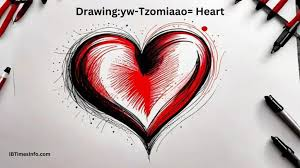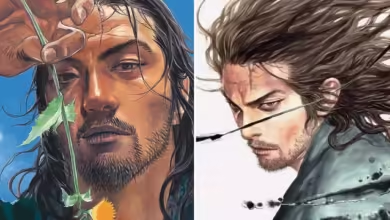Heartfelt Creations: A Step-by-Step Guide to Drawing:yw-tzomiaao= heart

Introduction to Drawing:yw-tzomiaao= heart
Drawing a heart is more than just creating a simple shape; it’s about capturing emotion, connection, and beauty. When you think of hearts, images of love and affection come to mind. But what if we told you that with some guidance, anyone can learn to draw this powerful symbol? Welcome to “Heartfelt Creations: A Step-by-Step Guide to Drawing the Heart.” Whether you’re an experienced artist or just starting out, this guide will help unleash your creativity and take your art skills to new heights. Get ready to explore the world of hearts in art—your journey begins here!
Understanding the Symbolism of Hearts in Art
Hearts have long been a powerful symbol in art, representing love, passion, and connection. Their universal shape evokes a sense of warmth and affection that transcends cultural boundaries.
Artists often use hearts to convey deep emotions. Whether it’s joy or heartbreak, the heart’s imagery resonates with viewers on multiple levels. This simple form can express complex feelings that words sometimes fail to capture.
In many cultures, hearts symbolize not just romantic love but also friendship and compassion. They remind us of our shared humanity and the bonds we create throughout our lives.
The versatility of the heart is evident across various artistic mediums—from paintings to sculptures. Every artist adds their touch while staying true to this emblematic shape, allowing for endless interpretations that keep audiences engaged.
Materials Needed for Drawing:yw-tzomiaao= heart
To create a stunning heart drawing, you’ll need some essential materials. Start with quality paper; smooth or textured options can lend different feels to your artwork.
Pencils are crucial for sketching. A range of graphite pencils from 2H to 6B will give you the flexibility for light sketches and bold lines.
Don’t forget about erasers! Kneaded erasers work wonders for gentle corrections without damaging your paper.
Color is vital too. Colored pencils or watercolors can add depth and vibrancy to your heart design, transforming it into a focal point.
Consider adding fine liners or markers for outlining after you’ve placed down color. This technique enhances clarity and gives the piece a polished finish.
Gather these tools, and you’ll be ready to bring your heartfelt creation to life!
Step 1: Sketching the Basic Shape of a Heart
To begin your heart drawing journey, start with the basic outline. Use a light hand to sketch an inverted triangle for the bottom point of the heart. This will serve as your foundation.
Next, create two curves that extend from each side of the triangle’s top. Imagine it like drawing a soft wave or a gentle slope. The key is to ensure both sides are symmetrical, which gives your heart its classic shape.
Don’t worry about perfection at this stage; focus on capturing the essence of a heart’s form. You can always refine it later.
Take a step back and observe your sketch. Make any necessary adjustments to enhance symmetry and balance before moving onto adding details in subsequent steps. Embrace this creative moment!
Step 2: Adding Details and Texture to the Heart
Once you have your basic heart shape, it’s time to breathe life into it. Start by adding details that will give your heart character and depth. Consider incorporating lines that mimic the natural curves of a heart, enhancing its three-dimensional appearance.
Textures can transform a simple drawing into something extraordinary. Experiment with shading techniques; a soft pencil can create subtle gradients, while cross-hatching adds bold contrasts. Don’t shy away from imperfections—these little quirks make your artwork unique.
Think about patterns as well. Swirls or dots within the heart can introduce an artistic flair that captures attention. You might also want to play with highlights; small white spots or lighter shades can suggest light reflecting off the surface.
Each detail contributes to telling a story through your art, inviting viewers to connect emotionally with what they see on the page.
Step 3: Incorporating Color into Your Drawing
Now it’s time to bring your heart drawing to life with color. Choose a palette that resonates with the emotion you want to convey. Reds and pinks often symbolize love, while blues can evoke calmness.
Start by lightly applying your base color. Use colored pencils or watercolors for a soft, blended effect. Don’t be afraid to layer colors; this adds depth and dimension.
Next, consider adding highlights and shadows. A touch of white near the edges creates a shiny effect, giving your heart that three-dimensional look. Conversely, dark shades can help define curves and contours.
Experimenting with different techniques will yield unique results. Try stippling for texture or blending for smooth transitions between colors. Each choice enhances the visual appeal of your artwork in its own way!
Tips and Techniques for Creating Lifelike Hearts
To create lifelike hearts, focus on the details. Observe how light interacts with surfaces. Highlight areas where light hits and deepen shadows in crevices for dimension.
Experiment with shading techniques like cross-hatching or stippling. These methods can add texture and depth, making your heart appear more three-dimensional.
Consider using color gradients to mimic real-life variations in hue. Blend colors smoothly to emulate the soft transitions found in nature.
Don’t forget about imperfections; they tell a story. A slight asymmetry or an irregular edge can make your heart feel unique and authentic.
Practice drawing different styles of hearts—realistic, abstract, or whimsical—to develop versatility in your artwork. Each style enhances creativity while allowing you to explore various artistic expressions within the concept of love and emotion.
Using Hearts in Various Types of Artwork
Hearts are versatile symbols that transcend different art forms. They can be found in paintings, illustrations, and mixed media projects. Artists often use hearts to convey emotions like love, compassion, and even heartbreak.
In abstract art, hearts take on a more stylized form. They may blend into vibrant colors or geometric shapes to evoke feelings beyond the literal meaning. The heart’s simplicity allows it to fit seamlessly into various contexts.
In digital artwork, the heart symbol plays a crucial role in icons or emoticons. It captures sentiments quickly and effectively in today’s fast-paced communication style.
Sculptors also explore the heart motif through three-dimensional pieces made from diverse materials such as clay or metal. Each medium offers unique textures that enhance the emotional impact of the heart shape.
Using hearts creatively invites endless possibilities for expression across artistic disciplines.
Conclusion to Drawing:yw-tzomiaao= heart
Drawing a heart can be both a simple and profound experience. By following the step-by-step guide outlined above, you can create beautiful representations that resonate with emotion and creativity. Whether you’re using hearts in personal artwork, cards for loved ones, or even as part of larger compositions, these essential techniques will enhance your drawing skills.
Keep practicing to refine your style and understand how to best express the symbolism behind hearts in art. Remember that each heart you draw tells its own story. Embrace the process and let your imagination flow freely as you embark on this artistic journey. With time and dedication, you’ll find joy in creating heartfelt masterpieces that truly reflect your vision!




